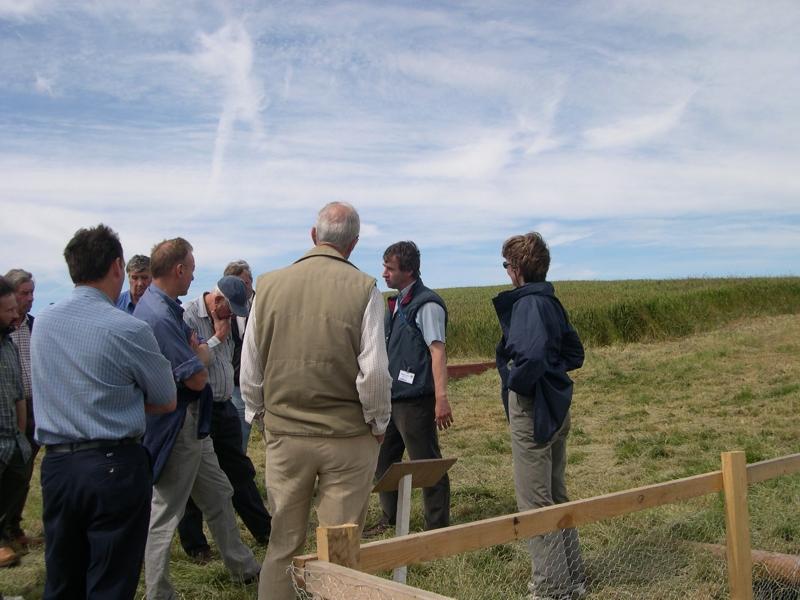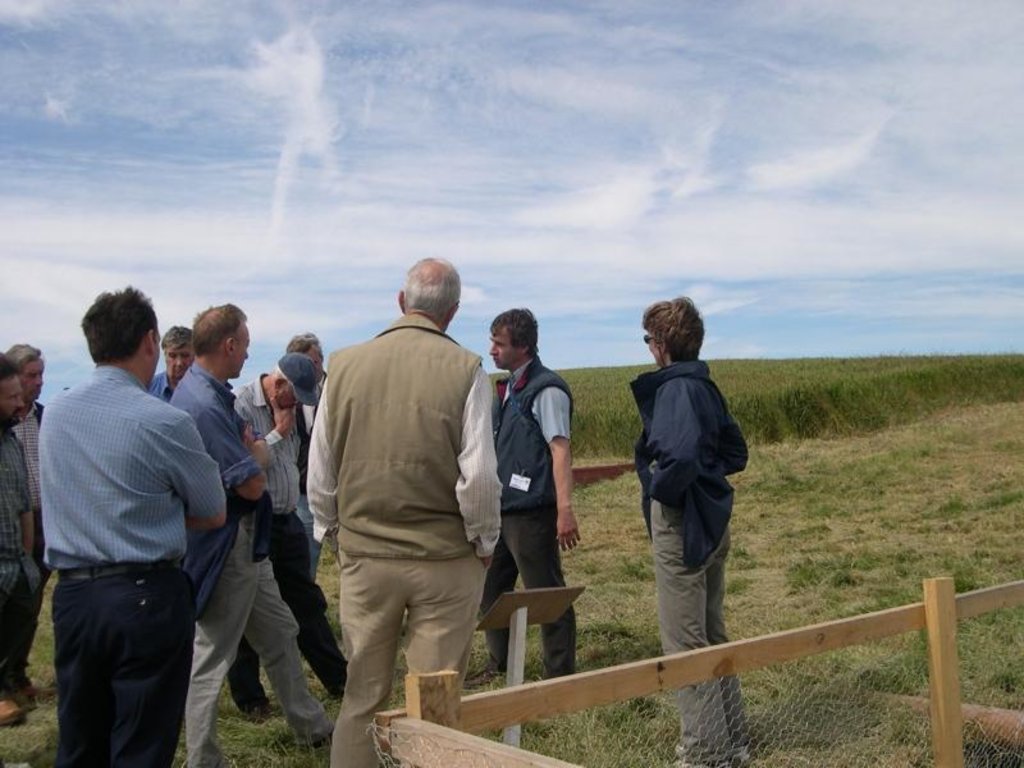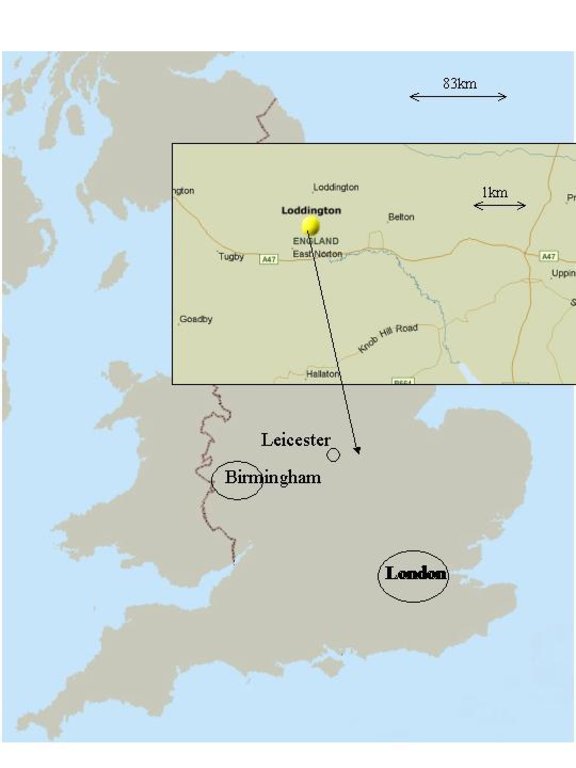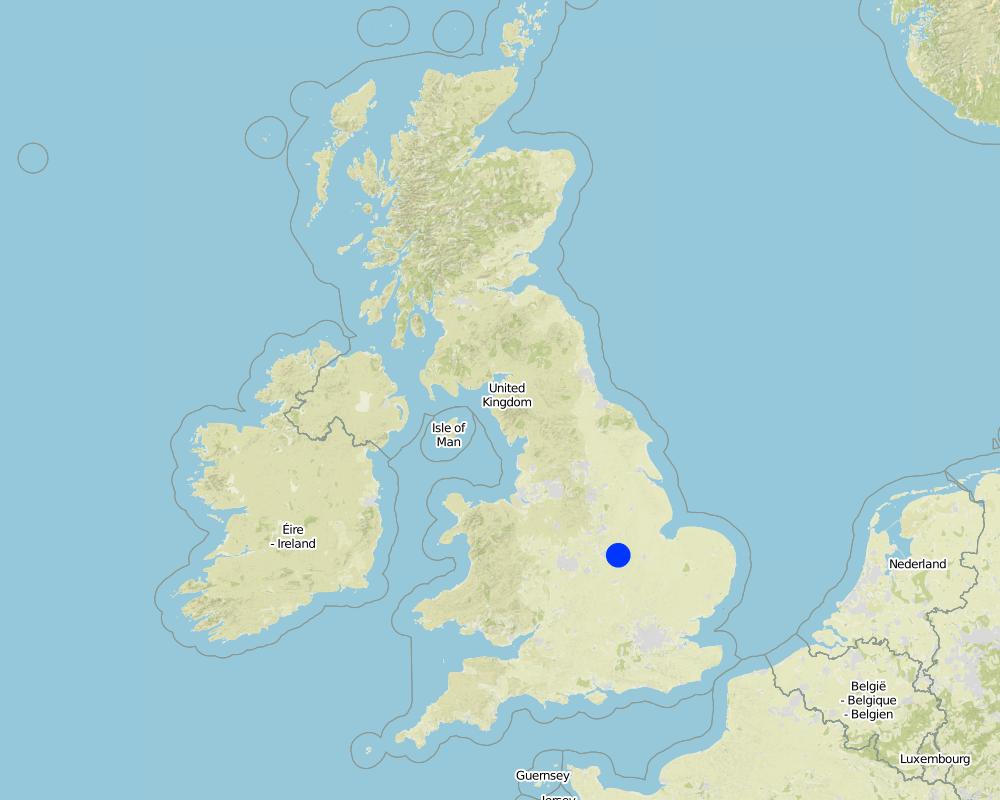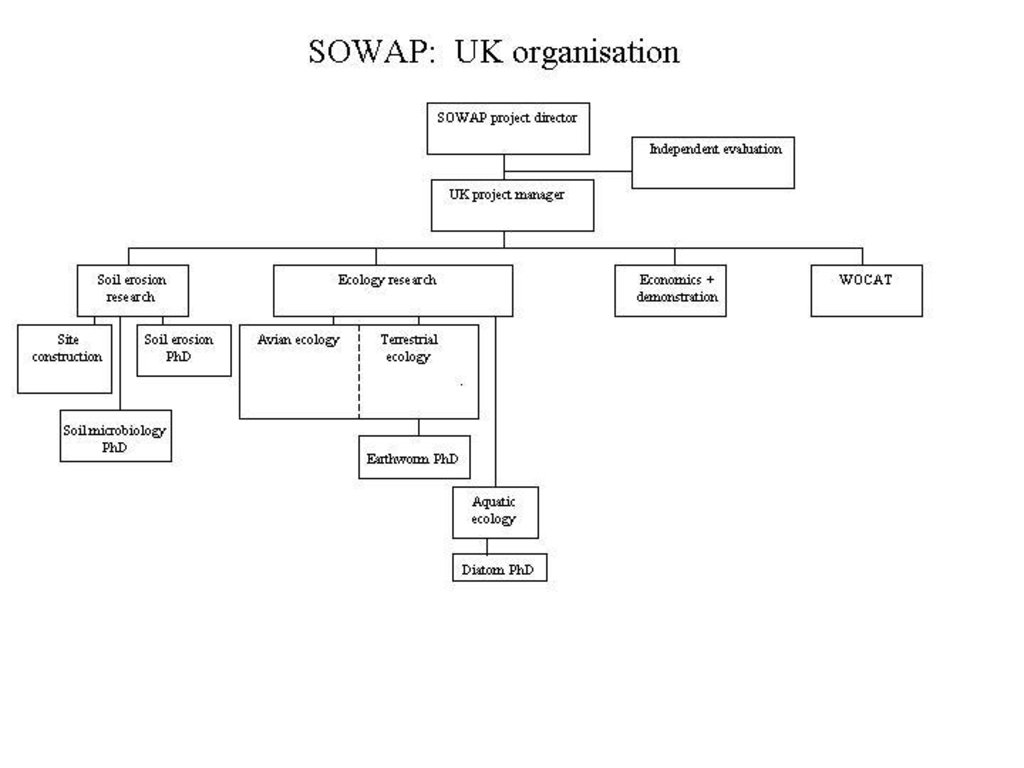Participatory on-farm demonstration in UK arable cropping: Loddington [英国]
- 创建:
- 更新:
- 编制者: Ceris A. Jones
- 编辑者: –
- 审查者: Fabian Ottiger
approaches_2639 - 英国
查看章节
全部展开 全部收起1. 一般信息
1.2 参与方法评估和文件编制的资源人员和机构的联系方式
SLM专业人员:
有助于对方法进行记录/评估的机构名称(如相关)
SOWAP (SOWAP) - 匈牙利1.3 关于使用通过WOCAT记录的数据的条件
编制者和关键资源人员接受有关使用通过WOCAT记录数据的条件。:
是
1.4 SLM技术问卷的参考
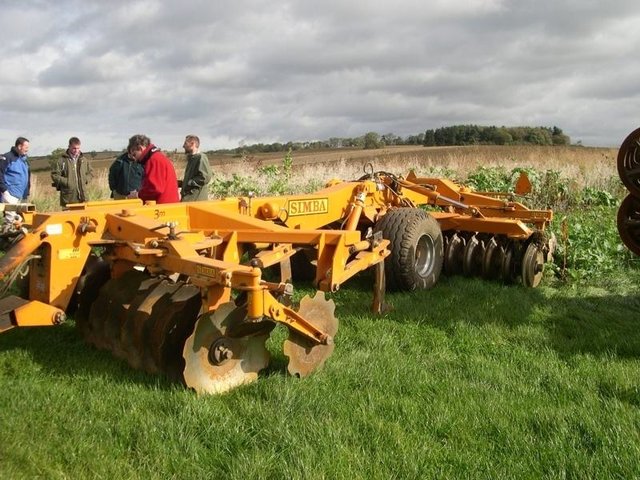
Non-inversion tillage in UK arable cropping; Loddington [英国]
Surface cultivation of the top 10cm of soil but not complete inversion
- 编制者: Ceris A. Jones
2. SLM方法的描述
2.1 该方法的简要说明
Provision of expert knowledge in appropriating equipment and setting up small scale on farm trials in collaboration with the land manager
2.2 该方法的详细说明
该方法的详细说明:
Aims / objectives: To enable farmer to improve economic viability of his operations and maintaining rural employment by increasing area under cultivation; to improve soil management and reduce erosion.
Methods: Presentation of technical and economic case to farmer; frequent discussions and field visits.
Stages of implementation: Purchase of appropriate cultivator drill enabled trials to begin.
Role of stakeholders: Farmer initiative in setting up a joint venture with neighbouring farm to enable purchse of equipment; SWC specialist using industry contacts to appropriate cultivator and using experience to solve problems and set up appropriate trials.
2.3 该方法的照片
2.5 采用该方法的国家/地区/地点
国家:
英国
区域/州/省:
Leicestershire
Map
×2.6 该方法的开始和终止日期
注明开始年份:
2001
2.8 该方法的主要目的/目标
The Approach focused mainly on other activities than SLM (speed and cost of crop establishment)
To overcome the financial, social and technical constraints listed in 2.1.3.3
The SLM Approach addressed the following problems: Technical problems: weed control, low work rate. Social problems: insufficient awareness of environmental benefits of SWC and incoming regulation, low level of confidence to try new techniques, getting farmer to won his own (erosion) problem
2.9 推动或妨碍实施本办法所适用的技术的条件
社会/文化/宗教规范和价值观
- 阻碍
traditional conservatism, perceptions, pride in a 'tidy' field
Treatment through the SLM Approach: discussion and demonstration
财务资源和服务的可用性/可得性
- 阻碍
cost of implementing new technology
Treatment through the SLM Approach: presentation of economic case
了解SLM,获得技术支持
- 阻碍
dealing with trash and weed management; conflicting advice from many sources; management of cover crop
Treatment through the SLM Approach: sharing risks and responsibility; input of expertise
3. 相关利益相关者的参与和角色
3.1 该方法涉及的利益相关者及其职责
- 当地土地使用者/当地社区
Working land users were mainly men (This is a single farm but the farmer now co-farms with a neighbour)
- SLM专家/农业顾问
- NGO
SOWAP team members
- 国家政府(规划者、决策者)
- 国际组织
- General population
3.2 当地土地使用者/当地社区参与该方法的不同阶段
| 当地土地使用者/当地社区的参与 | 指定参与人员并描述活动 | |
|---|---|---|
| 启动/动机 | 无 | |
| 计划 | 无 | |
| 实施 | 无 | |
| 监测/评估 | 无 | |
| Research | 无 |
3.3 流程图(如可用)
3.4 有关SLM技术选择的决策
具体说明谁有权决定选择要实施的技术:
- 主要是土地使用者,由SLM专家提供支持
解释:
Input by specialist and farm management company
Decisions on the method of implementing the SLM Technology were made by mainly by land users supported by SLM specialists. Land manager needed to be comfortable with the decisions made
4. 技术支持、能力建设和知识管理
4.1 能力建设/培训
是否为土地使用者/其他利益相关者提供培训?:
是
培训形式:
- 在职
- 农民对农民
- 示范区域
- 公开会议
涵盖的主题:
soil management, impacts on water and biodiversity
4.3 机构强化(组织发展)
是否通过这种方法建立或加强了机构?:
- 否
4.4 监测和评估
监测和评估是该方法的一部分吗?:
是
注释:
bio-physical aspects were regular monitored through measurements
technical aspects were regular monitored through measurements
economic / production aspects were ad hoc monitored through measurements
no. of land users involved aspects were ad hoc monitored through measurements
There were no changes in the Approach as a result of monitoring and evaluation
4.5 研究
研究是该方法的一部分吗?
是
明确话题:
- 经济/市场营销
- 生态学
- 技术
提供进一步的细节,并指出是谁做的研究:
Yields and gross margins; effects on biodiversity especially birds; rate of technology uptake
Research was carried out on-farm
5. 融资和外部物质支持
5.2 为土地使用者提供财政/物质支援
土地使用者是否获得实施该技术的财政/物质支持?:
是
5.3 对特定投入的补贴(包括劳动力)
如果土地使用者的劳动力是一项重要的投入,那么是不是:
- 以现金支付
5.4 信用
是否根据SLM活动的方法给予信用值?:
否
6. 影响分析和结论性陈述
6.1 方法的影响
该方法是否帮助土地使用者实施和维护SLM技术?:
- 否
- 是,很少
- 是,中等
- 是,支持力度很大
Did other land users / projects adopt the Approach?
- 否
- 是,很少
- 是,中等
- 是,支持力度很大
6.3 方法活动的可持续性
土地使用者能否维持通过该方法实施的措施(无外部支持的情况下)?:
- 不确定
若否或不确定,请具体说明并予以注释:
Technical difficulties that may arise e.g. weed management, soil compaction, will require expert input and expertise from different areas
6.4 该方法的长处/优点
| 土地使用者眼中的长处/优势/机会 |
|---|
| opportunity to expand knowledge and transfer that to other farmers |
| greater confidence |
| 编制者或其他关键资源人员认为的长处/优势/机会 |
|---|
| improved motivation (How to sustain/ enhance this strength: continued support, technical advice and recognition of farmer's achievement) |
| improved education and awareness (How to sustain/ enhance this strength: continued support, technical advice and recognition of farmer's achievement) |
| greater confidence |
| improved problem solving capabilities |
6.5 该方法的弱点/缺点以及克服它们的方法
| 编制者或其他关键资源人员认为的弱点/缺点/风险 | 如何克服它们? |
|---|---|
| dependent on personalities i.e. with a more conservative farmer, this approach would be unsuccessful |
7. 参考和链接
7.1 方法/信息来源
- 实地考察、实地调查
- 与土地使用者的访谈
链接和模块
全部展开 全部收起链接

Non-inversion tillage in UK arable cropping; Loddington [英国]
Surface cultivation of the top 10cm of soil but not complete inversion
- 编制者: Ceris A. Jones
模块
无模块


